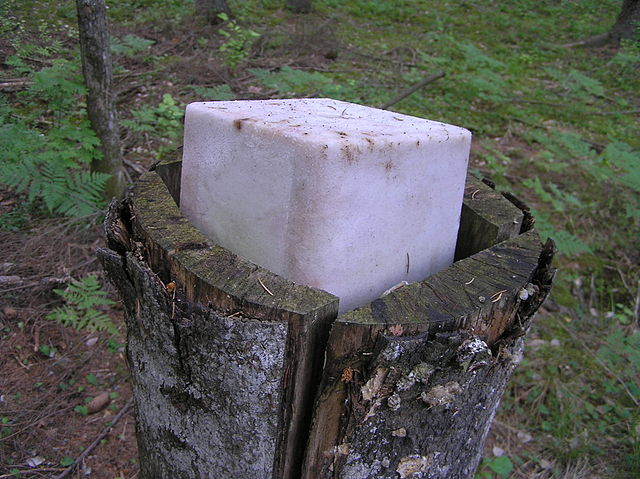Lesson 15
Volume of Prisms
Let’s look at the volume of prisms that have fractional measurements.
Problem 1
A pool in the shape of a rectangular prism is being filled with water. The length and width of the pool is 24 feet and 15 feet. If the height of the water in the pool is \(1\frac13\) feet, what is the volume of the water in cubic feet?
Problem 2
A rectangular prism measures \(2\frac25\) inches by \(3\frac15\) inches by 2 inch.
- Priya said, “It takes more cubes with edge length\(\frac25\) inch than cubes with edge length \(\frac15\) inch to pack the prism.” Do you agree with Priya? Explain or show your reasoning.
-
How many cubes with edge length \(\frac15\) inch fit in the prism? Show your reasoning.
-
Explain how you can use your answer in the previous question to find the volume of the prism in cubic inches.
Problem 3
-
Here is a right triangle. What is its area?
-
What is the height \(h\) for the base that is \(\frac54\) units long? Show your reasoning.

Problem 4
To give their animals essential minerals and nutrients, farmers and ranchers often have a block of salt—called “salt lick”—available for their animals to lick.
-
A rancher is ordering a box of cube-shaped salt licks. The edge lengths of each salt lick are \(\frac{5}{12}\) foot. Is the volume of one salt lick greater or less than 1 cubic foot? Explain your reasoning.

- The box that contains the salt lick is \(1\frac14\) feet by \(1\frac23\) feet by \(\frac56\) feet. How many cubes of salt lick fit in the box? Explain or show your reasoning.
Problem 5
- How many groups of \(\frac13\) inch are in \(\frac34\) inch?
- How many inches are in \(1\frac25\) groups of \(1\frac23\) inches?
Problem 6
Here is a table that shows the ratio of flour to water in an art paste. Complete the table with values in equivalent ratios.
| cups of flour | cups of water |
|---|---|
| 1 | \(\frac12\) |
| 4 | |
| 3 | |
| \(\frac12\) |